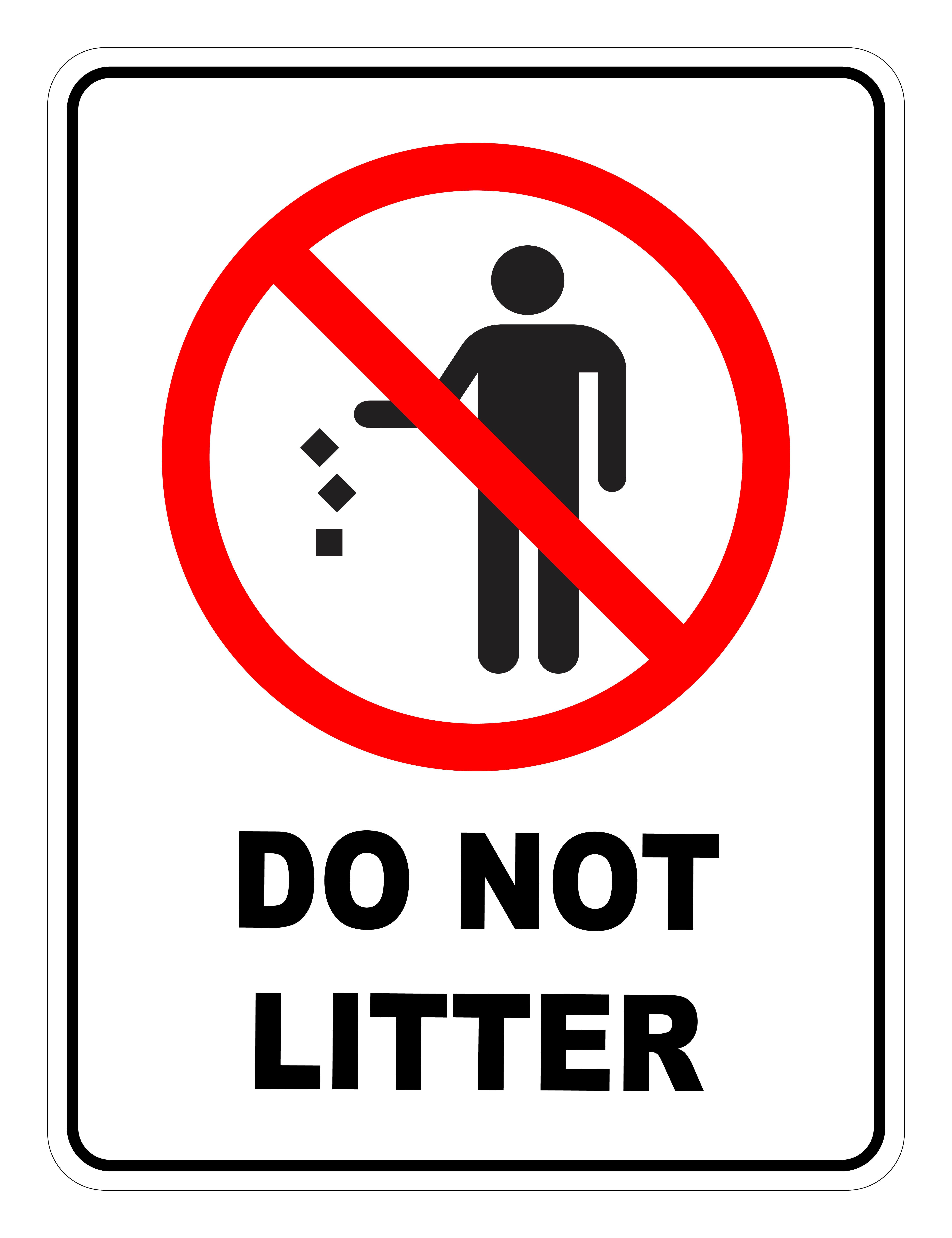Maintaining a clean and safe work environment is crucial for productivity, morale, and overall well-being. One often overlooked aspect of workplace safety is waste management, and specifically, the prohibition of littering. The presence of litter can create hazards such as slip and trip risks, attract pests, and even contribute to the spread of germs and bacteria. Ensuring a litter-free environment is a shared responsibility that requires consistent effort and clear communication.
Do Not Litter Prohibited Safety Sign
 Visual cues, like strategically placed “Do Not Litter” signs, serve as powerful reminders to employees and visitors alike. These signs reinforce the expectation of responsible waste disposal and highlight the potential consequences of failing to adhere to established guidelines. A clearly visible sign communicates a commitment to maintaining a clean and organized workspace, setting a positive example for everyone.
Visual cues, like strategically placed “Do Not Litter” signs, serve as powerful reminders to employees and visitors alike. These signs reinforce the expectation of responsible waste disposal and highlight the potential consequences of failing to adhere to established guidelines. A clearly visible sign communicates a commitment to maintaining a clean and organized workspace, setting a positive example for everyone.
The impact of litter extends beyond immediate safety concerns. A cluttered and unkempt environment can negatively impact employee morale and productivity. When workers are surrounded by trash and debris, it can create a sense of disorganization and contribute to feelings of stress and frustration. Conversely, a clean and well-maintained workspace fosters a sense of pride and professionalism, encouraging employees to take greater ownership of their surroundings and contribute to a more positive work atmosphere.
Furthermore, proper waste management is essential for environmental sustainability. Litter can contaminate soil and water sources, harm wildlife, and contribute to the degradation of natural habitats. By actively preventing littering and promoting responsible waste disposal practices, organizations can demonstrate their commitment to environmental stewardship and contribute to a more sustainable future. This can involve implementing comprehensive recycling programs, providing readily accessible waste receptacles, and educating employees about the importance of responsible waste management.
Effective implementation of a “Do Not Litter” policy requires a multi-faceted approach. In addition to posting clear and visible signage, organizations should also provide adequate waste disposal facilities, including recycling bins and trash cans, in convenient locations throughout the workspace. Regular cleaning and maintenance are also crucial for preventing the accumulation of litter and maintaining a clean and organized environment. Employee training and awareness programs can help to reinforce the importance of responsible waste disposal practices and educate employees about the specific procedures and guidelines in place. These programs should emphasize the importance of reducing waste, reusing materials whenever possible, and properly disposing of waste in designated receptacles.
Ultimately, preventing litter is a shared responsibility that requires the active participation of everyone in the workplace. By fostering a culture of cleanliness and encouraging employees to take pride in their surroundings, organizations can create a safer, more productive, and more environmentally sustainable work environment. This commitment to cleanliness not only benefits the organization itself but also contributes to the well-being of employees and the preservation of the environment.
If you are looking for Do Not Litter Prohibited Safety Sign you’ve visit to the right place. We have 1 Pictures about Do Not Litter Prohibited Safety Sign like Do Not Litter Prohibited Safety Sign and also Do Not Litter Prohibited Safety Sign. Here it is:
Do Not Litter Prohibited Safety Sign
 www.safetycivil.com.auDo Not Litter Prohibited Safety Sign
www.safetycivil.com.auDo Not Litter Prohibited Safety Sign
Do not litter prohibited safety sign. do not litter prohibited safety sign